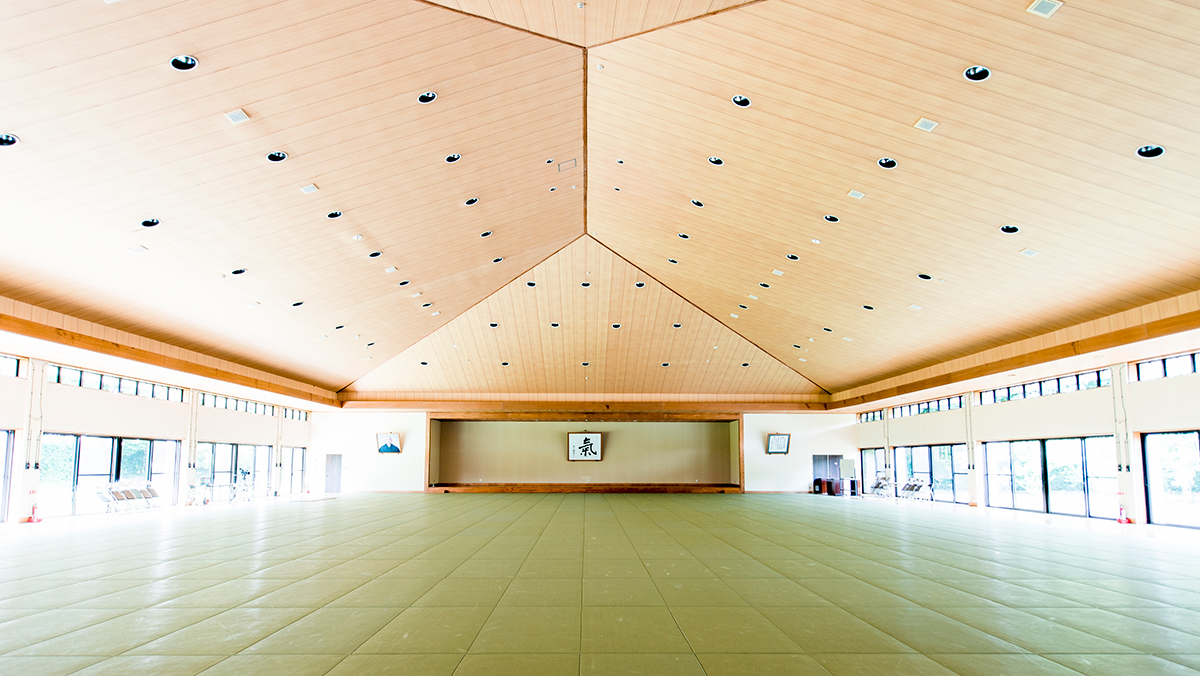This is a story about after I became an instructor.
I began my training as an Uchideshi, the disciple training of Koichi Tohei Sensei, and was soon given a teaching position in an adult class of about 20 students. Although I had experience leading practice in the university Aikido club, my understanding of Ki was insufficient, my teaching skills were inadequate, and my humanity was still inexperienced.
In the beginning, many people came to the class, but one by one, they began to decrease in number, and when the winter weather was very severe, there was the only man in the class. He may have come to class with a sense of responsibility, thinking that “If I am absent, the class will not exist!”
I felt it was unbearable to reduce the number of students in the class that my master had entrusted to me. At such times, strangely enough, the techniques often went wrong.
I must have had a very pessimistic look on my face when, one day, I was finally questioned by Koichi Tohei Sensei about my class.
Master Tohei: “I have heard that the number of people coming to your class is decreasing these days.”
I: “I’m sorry! I’m trying my best, but…”
Master Tohei: “You have no confidence, do you?”
I: “Yes…. There are many techniques that don’t work.”
Master Tohei: “You know why it doesn’t work?
It was very frustrating to be asked “why?” because I was the one who really wanted to know why I cannot do this correctly! There is no one that I am ignoring. Perhaps it’s simply a matter of my ability. Or maybe I am not talented enough? He must have seen through all of my thoughts.
Master Tohei : “It’s not a matter of ability or talent. It’s because you are pulling Ki. Turn your mind to what you can do, not what you can’t do.
After telling me that , Koichi Tohei Sensei left.
I had begun my training to become the successor of Shinshin Toitsu Aikido, so all I could think about was whether or not I would be accepted by everyone. I was trying to do more than I was able to do at the moment, and that was the same as desperately trying to do what I could not do.
“So, what can I do now?” I wondered. At first, I thought I had nothing to offer, but when I started to calm down, I found that I actually had a lot to offer.
For instance, I had the idea to clean up the dojo even more than before, so that everyone who comes to practice can spend their time with us feeling as comfortable as possible.
I could also welcome and say goodbye to everyone with a positive smile from the bottom of my heart().
Even if I couldn’t solve everything, I could pay attention to each person and listen to their concerns.
In this way, we can support the students regardless of our teaching skills. I decided that I would do the best that I could before deciding that I didn’t have the ability or talent.
In spite of my efforts, there was a period of time when our numbers were low for a while. But, by the end of winter and the beginning of spring, the number of people who came to practice gradually increased, and by early summer, the number of students was even greater than the number we had initially enrolled.
The most surprising thing to me, was that I was able to perform techniques that had been completely unsuccessful before. The first of the Five Principles of Shinshin Toitsu Aikido is “Ki is extending,” so the positive changes are no surprise to me now.
“Instead of worrying about what you can’t do, find what you can do and do your best.”
I realized that this is “Extending Ki”, and it was revealed through all the experiences that I had in the past.
Now that I am teaching many of you both in Japan and abroad, I want to keep this original intention in mind as I continue to teach.
(translate: Moe Mimori)
(edit: C. Curtis)

